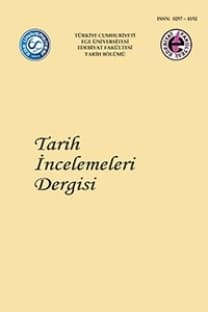Ottoman Music In Travel Books: A Path To Restructure The Forgotten Ottoman Musical Instruments
Ottoman musical instruments, travelers and Ottoman music, entertainment at the Ottoman court, Ottoman musicians
Ottoman Music In Travel Books: A Path To Restructure The Forgotten Ottoman Musical Instruments
Ottoman musical instruments, travelers and Ottoman music, entertainment at the Ottoman court, Ottoman musicians,
___
- Arıtan 1993 Ahmet Saim Arıtan, “Ciltçilik.” Diyânet İslâm Ansiklopedisi, volume 7, pp. 556-557. Aksoy 2003 Bülent Aksoy, Avrupalı Gezginlerin Gözüyle Osmanlılarda Musıki, Pan Yayıncılık, İstanbul.
- Aksoy Bülent Aksoy, “The Contributions of Multi-Nationality to Classical Ottoman Music”, http://www.goldenhorn.com/display.php4?content=library&page=gold en_aksoy02.html, retrived on June 2, 2015.
- ISSN: 0257-4152
- Yayın Aralığı: 2
- Başlangıç: 1983
- Yayıncı: Prof. Dr. Süleyman Özkan
Ottoman Music In Travel Books: A Path To Restructure The Forgotten Ottoman Musical Instruments
Roma AŞ; İlk Çokuluslu Şirketin Yükselişi ve Çöküşü
Osmanlıcılıktan Türk Milliyetçiliğine Bir Çocuk Dergisi: Çocuk Dünyası (1913-1914)
Yeni Bir Vatan. Çerkeslerin Osmanlı İmparatorluğu’na Zorunlu Göçü (1864)
The Institution of “Vigla” in the Aegean Islands during the Ottoman Period
Ayşe KAYAPINAR, M. Halef CEVRİOĞLU
Erken Cumhuriyet Dönemi ve Sonrasında Türkiye’de Balıkçılık Faaliyetleri (1923-1960)
İlkel Kimlik ve Enstrümantal Kimlik
Geç Ortaçağ İngiliz Toplumunu Anlamak: Tarih Yazıcılığında Bastard Feudalism Kavramının Gelişimi
HELLENSEVER NERO'NUN BÜYÜK HAMLESİ: ACHAIA EYALETİ'NİN ÖZGÜRLEŞTİRİLMESİ
